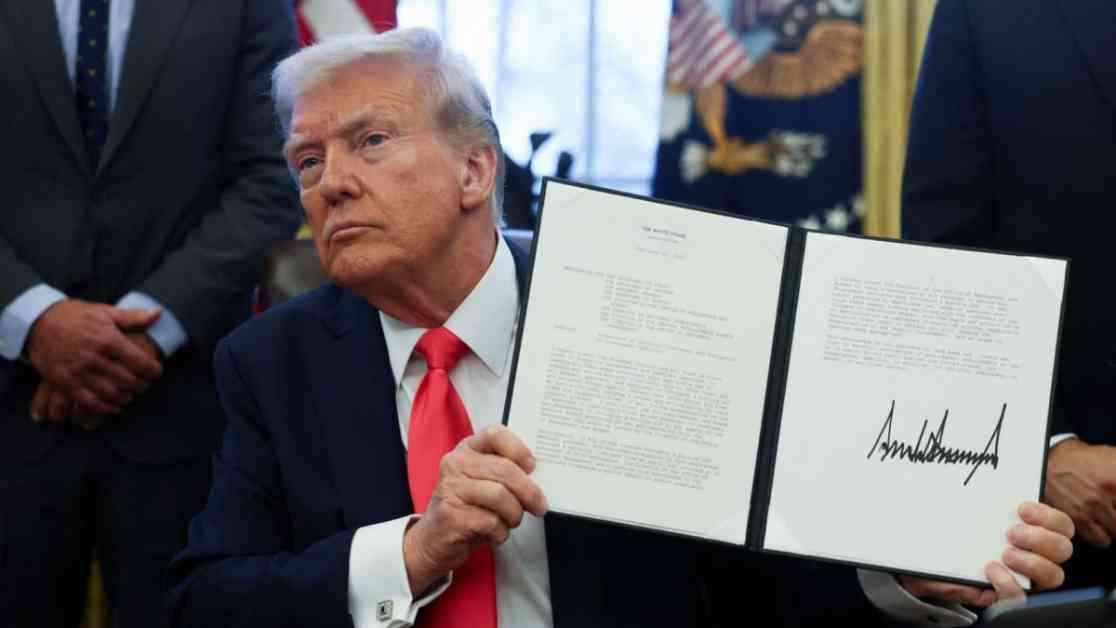President Donald Trump announced that his proposed tariffs on Mexico and Canada are set to go into effect on March 4, 2025. Additionally, he stated that China will face an additional 10% tariff on that same date. This decision comes after the Trump administration recently paused the sweeping 25% tariffs on imports from Mexico and Canada for a one-month period, causing uncertainty about whether they would resume after the delay expired. Trump took to Truth Social to clarify that the tariffs would indeed be implemented, citing concerns about illicit drugs flowing into the United States from its neighbors despite promises to enhance border security efforts.
The Impact of Tariffs on China and the Stock Market
In his social media post, President Trump also expressed his intention to impose an additional 10% tariff on Chinese products starting March 4. This move would bring the total U.S. tariffs on Chinese imports to 20%. Following this announcement, Dow Jones Industrial Average futures initially dipped but later rebounded as markets opened. The uncertainty surrounding tariff policies and their impact on global trade dynamics has been a point of contention for investors and businesses alike, with fluctuations in the stock market reflecting the unpredictability of these decisions.
Contradictions and Confusion Surrounding Tariff Timelines
However, the president’s announcement seemed to contradict statements made earlier by White House National Economic Council Director Kevin Hassett on CNBC’s “Squawk Box.” Hassett had indicated that Trump would be evaluating tariff policies for all countries based on a forthcoming study scheduled for release on April 1. Trump, during his Cabinet meeting, had suggested that the tariffs on Mexico and Canada would align with those on other nations, adding to the ambiguity surrounding the administration’s trade policies. The conflicting narratives from various sources highlight the challenges of interpreting and anticipating the implications of tariff escalations on a global scale.
Navigating the Complexities of Tariff Strategies
President Trump’s emphasis on tariffs as a means of generating revenue and addressing trade imbalances has been a central tenet of his second-term agenda. Beyond the tariffs on China, Mexico, and Canada, his administration has initiated a broader strategy of imposing 25% tariffs on steel and aluminum imports worldwide, slated to take effect on March 12. Moreover, Trump has signed a presidential memorandum outlining reciprocal tariffs on countries that impose duties on U.S. imports, positioning these measures as responses to what he deems unfair trade practices. The intricate web of tariffs, reciprocal actions, and trade policies underscores the multifaceted nature of international trade relations and the complexities involved in navigating these dynamics.
In conclusion, President Donald Trump’s announcement regarding the implementation of tariffs on Mexico, Canada, and China reflects the administration’s ongoing efforts to recalibrate trade relationships and address perceived imbalances. The interplay of economic considerations, geopolitical implications, and market responses underscores the far-reaching consequences of tariff policies on a global scale. As stakeholders across industries await further developments and clarity on the administration’s trade agenda, the impact of these decisions reverberates through financial markets, diplomatic relations, and supply chains worldwide. The evolving landscape of international trade underscores the need for strategic foresight, nuanced policy frameworks, and collaborative approaches to address the complexities of a interconnected global economy.


